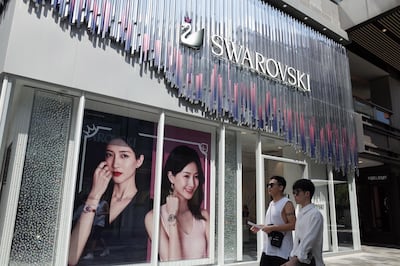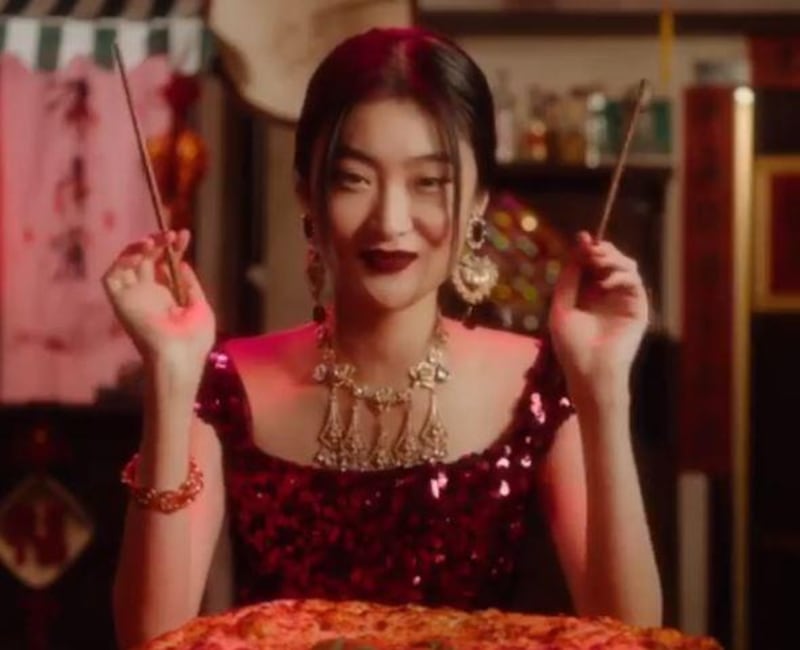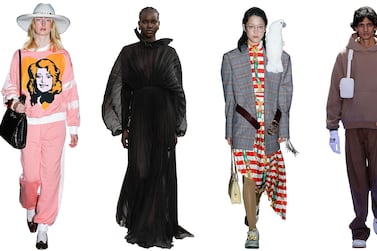The language of fashion is a global one; it's a universal expression we can all understand, beyond the limitations of our verbal constraints. However, this global tongue has many different dialects, and it can be a costly mistake to assume otherwise.
Last week, Versace was forced to issue an apology to China. The Italian house released a T-shirt listing a number of prominent global cities, alongside their country of origin. Former colonies Hong Kong and Macau, now both special administrative regions, were not attributed to China, unlike Shanghai and Beijing. The design was accused of conflicting with the Asian nation's "One China" policy, and the backlash comes at a particularly tense time, as mass protests in Hong Kong roll into their third month.
The offending item has since been removed from sale and destroyed, Versace said in a statement. “Never have I wanted to disrespect China’s national sovereignty, and this is why I wanted to personally apologise for such inaccuracy and for any distress that it might have caused,” Donatella Versace, the brand’s chief creative officer, posted on her personal Instagram account.
What's wrong with you, Versace? Apology on Weibo is not enough! #Versace @Versace pic.twitter.com/WUQsp5YE3Y
— Xiao (@Xiao82834532) August 11, 2019
Before long, Coach, Givenchy and Swarovski had issued near-identical apologies for similar errors said to question China's sovereignty, no doubt in a bid to be on the right side of the market's spending power. Chinese customers account for 33 per cent of luxury sales. By 2025, that figure is predicted to rise to 46 per cent. If international fashion, handbags and jewellery houses want to maintain their positions, it's vital to get Chinese consumers on-board. However, these companies are far from the first to get things wrong when heading East.
Many luxury brands from the West are learning the hard way that the covetable Chinese market is a complex one, and expecting consumers to respond to products on the merit of the brand's prestige alone is foolhardy, if not outright fatal. "Consumers are searching for a deeper relationship with the brand, as opposed to a more superficial meaning that is logo-driven," says Glyn Atwal, associate professor of marketing at France's Burgundy School of Business and co-author of Luxury Brands in China and India. "It's the luxury brand's story that connects that brand with the consumer."

Building that relationship is not always easy. Traditional tried-and-tested advertising and marketing methods, which have long been effective in the West, often miss the mark with Chinese citizens, because their buying habits are very different. “The game-changer is how younger Chinese luxury consumption is reassessing the meaning of social status,” Atwal notes. In this market, luxury is not confined to the uber-rich upper class; as discretionary income goes up, investing in high-end goods is also increasingly enjoyed by younger consumers from the middle classes.
In fact, spending on luxury goods is a cross-society aspiration. As author Shaun Rein explains in his book, The War for China's Wallet: Profiting from the New World Order, Chinese shoppers follow the CMR Hour Glass Shopping Model, meaning they shop at the high and low end of the spectrum, splurging on the former and saving on the latter, with little room for brands that fall in the middle.
For example, spending on household essentials or basic items, things that are not seen by the outside world and offer no level of aspiration, are often done as frugally as possible. In his book, Rein talks about how it's not uncommon to see million-dollar cars such as Bentleys and Rolls Royces parked on the side of the highway to avoid having to pay $1.75 (less than Dh7) in car parking charges. It's also why mid-range brands such as Marks & Spencer and Asos failed to make a mark.
These lower-income shoppers, who are prepared to break the bank for luxury items, feel the need to connect with the values of the brand. “To put this into perspective, a 2018 Edelman Earned Brand survey found that 78 per cent of Chinese respondents will buy or boycott a brand solely because of its position on a societal issue,” says Atwal. “Anti-brand sentiment is no longer an extreme; it’s evolved into a mainstream phenomenon. Luxury brands have never been under such intense scrutiny facilitated by social media. The bottom line is that no brand can afford a reputational crisis.”
Designers Domenico Dolce and Stefano Gabbana are living proof of this. In November last year, the duo's eponymous Italian brand got things really, really wrong in China. It started with a tone-deaf marketing video that offered advice on how to eat pizza, pasta and other Italian food with chopsticks. In one shot, a model dressed in a red sequinned gown attempts to pick up a large piece of cannoli with her chopsticks. "It's way too big for you, isn't it?" a voiceover says in Mandarin. "You can also penetrate one of your chopsticks into the cannoli," it continues, before the model starts picking up the cream bit by bit.
Social media users responded with accusations that Dolce & Gabbana was reinforcing cultural stereotypes and had no understanding or appreciation of Chinese culture. Instagram account Diet Prada, a strong critic of the high fashion world, called the advertisement “pandering”, which paints the brand’s “target demographic as a tired and false stereotype of a people lacking the refinement to understand how to eat foreign foods”. It added that the “cliche ambient music” and “comical pronunciations” of foreign names begged the question: who is this video actually for?
The backlash ultimately led to The Great Show, Dolce & Gabbana's first-ever runway presentation to take place in Shanghai, being cancelled a few hours before it was due to start – a decision that cost the brand several million dollars; it was dropped from some of China's biggest e-tailers and a mass boycott took place on the mainland. Almost a year later, Dolce & Gabbana is still feeling the effect of its misjudgement, not only in China, but globally, as a number of former celebrity ambassadors continue to shun its latest collections.
“Chinese consumers are more than ever willing to punish brands for inappropriate behaviour,” says Atwal. “Dolce & Gabbana is a compelling example of brand hate – an extreme negative effect. There is no doubt a loss of trust and a damaged reputation that will be felt for many years. Rebuilding the brand will involve much more than rhetoric; it will need to earn the trust and confidence of the Chinese consumer. In essence, this will involve changing the culture of the organisation. These are important lessons for other luxury brands, and many are still failing to understand the cultural sensitivities of the market.” While Dolce & Gabbana is an extreme example, it highlights the power that marketing holds when it comes to breaking into China.

“The dilemma facing many international brands is how to address the need for local adaption while maintaining an overall global approach,” Atwal continues. “In a lot of cases, Chinese managers remain under-represented in the top management teams. Luxury brands need to access expertise and knowledge to ensure they are culturally relevant in a fast-changing environment.”
One brand getting things right, Atwal adds, is Hermès. The French brand has cemented its position in the Chinese luxury market, and has done a "remarkable job" of accessing consumers, capitalising on new distribution and communication channels, while also maintaining its own exclusivity. "A cornerstone of its marketing strategy has been to reinforce its cultural imprint, such as hosting the exhibition Harnessing the Roots at the Hermès maison in Shanghai," he says. "However, Hermès has taken steps to cultivate a stronger cultural relationship in China. The launch of Shang Xia by Hermès in 2010, a homeware [and fashion] label that celebrates Chinese craftsmanship and reconnects traditional culture with an appreciation for contemporary design, [proves that] Hermès not only understands China, but is also firmly ingrained in the fabric of the country."
High-end consumers in China are not a homogeneous, easily characterised group, and taking a one-size-fits-all approach is costing companies the attention of this powerful and lucrative market.







